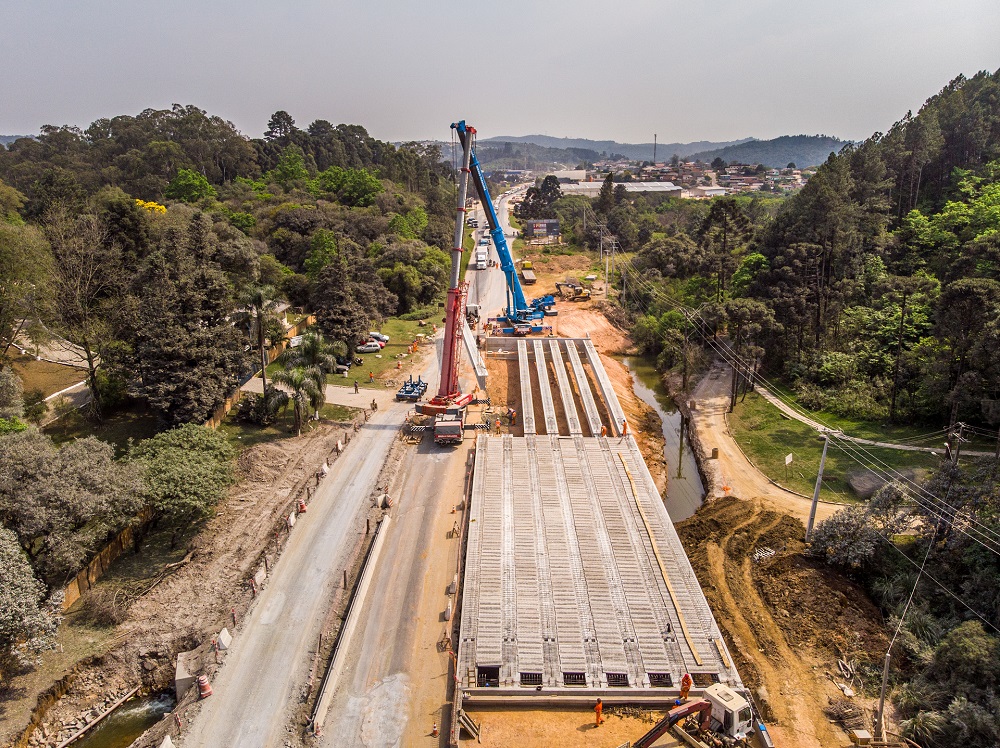As construction at the Gávea subway station advances to the stage involving the detonation of 60 meters of rock,...
OEC to build a new stretch of the Canal do Sertão Alagoano
DATE: 01/25/2022
Besides the Canal, the company won the bidding to duplicate a new stretch of the Rodovia dos Minérios (Ore Highway), in Paraná
The construction company OEC won the bidding held by the Alagoas State Government for the construction of the fifth stretch of the Sertão Canal. The company, which recently delivered the fourth stretch of the same project, was hired to prepare the executive engineering projects, supply materials, equipment, and carry out the civil construction work for the implementation of a 26.6 kilometer stretch, between KM 123.4 and KM 150, passing through the municipalities of São José da Tapera, Olha D’água das Flores, and Monteirópolis.
More than 800 jobs should be generated at the peak of construction, with the use of mostly local labor. Around 130 pieces of heavy equipment will be used in the work. The overall estimated term of the agreement is 40 months, 27 of which for the execution of the work. With the conclusion of the fifth stretch, the Canal do Sertão Alagoano will complete an extension of 150 kilometers. At the end of the project, the largest water infrastructure project in Alagoas and one of the largest in Brazil will be 250 kilometers long, reaching the city of Arapiraca and benefiting more than a million people in 46 cities in the countryside and hinterland of Alagoas. The execution of the new stretch was tendered for BRL 429.8 million.
Engineering Challenge
One of the great engineering challenges for the project will be the construction of the third tunnel, 1.5 kilometers long, with rock mass classes ranging from II to V – the scale goes from I (hardest) to V (least hard). The tunnel will be excavated using the NATM method. (New Austrian Tunnelling Method) Drill & Blast, with advance according to the class of rock mass mapped by the TCM (Technical Construction Monitoring) team, with the respective treatments provided for in the executive project. The project provides for specific treatments for each type of rock mass, with the application of shotcrete, metallic reinforcement (mesh), tension rods, crankshafts, and short drains. Due to the characteristics of the rock in the initial sections of the tunnel’s embankment and debankment and in order to ensure greater safety and stability, self-drilling cable trays will be installed in sections with low rock cover.
The project will include the construction of 18 trapezoidal channels, totaling about 20 kilometers; a 1.5-kilometer tunnel; a 1.5-kilometer inverted siphon; four 1-kilometer canal bridges, as well as three floodgates. For Marco Siqueira, president of OEC, “this is an expected and fundamental project for the region, which demonstrates the importance of direct investment by the state to advance in chronic infrastructure issues, such as the supply of water for human consumption and new economic activities in the semi-arid region.
According to Henrique Paixão, the Contract Manager responsible for the work, the fact that OEC already had a structure based on the end of stretch IV of the Canal, recently completed by the company, counted in OEC’s favor. “We have a very mature learning curve for this project, as we successfully executed the entire length of the immediately preceding section. We have trained manpower on site and will give full preference to these people who have been with us on this recent job.”

Ore Highway
Besides the Alagoano Hinterland Canal, OEC also celebrated another achievement this week. It is a new 1.28-kilometer stretch that will be duplicated on PR-092 (Lot 2.1B), known as Rodovia dos Minérios (Ore Highway), between the cities of Curitiba and Almirante Tamandaré, in Paraná. OEC is already duplicating a 4.74 kilometer stretch of the same highway.
The new agreement includes the preparation of the basic and executive projects and the execution of the duplication and restoration works of PR-092, a stretch between KM 14.36 and KM 15.64, on the urban perimeter of Almirante Tamandaré, including the implementation of a grade-separated intersection, marginal on both sides, curbs, footbridges, pavements, and bike lanes.
The contractual term stipulates that the work should be completed in 24 months, of which 18 months will be used for civil works. In all, 160,000 cubic meters of earth moving and 6,100 cubic meters of concrete will be executed, besides the use of 425 tons of steel. The DER-PR will invest BRL 50.7 million, financed with resources from the Bank of Brazil. The construction work will generate approximately 150 jobs with mostly local workforce.
OEC was competing with three other companies and/or consortiums in a bidding process in the DRIEC modality (Differentiated Regime for Integrated Electronic Contracting), which was won by the company after an electronic auction.



No comments